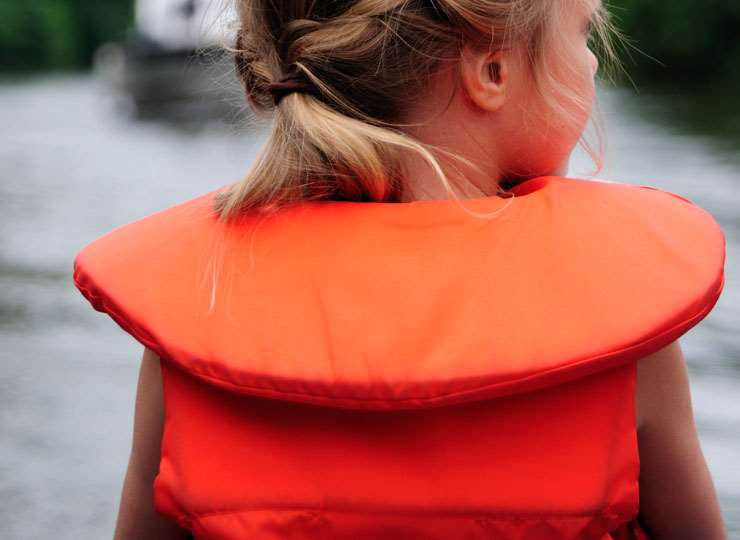

Life jacket or buoyancy aid?
The most important property of a flotation device is to keep the user afloat. However, there are huge differences in how the various types of device work in practice. What you should know before you make your choice.
Test before use
The user’s weight, size and clothing, and the design of the flotation device, are factors that affect how a flotation device works in practice.
To ensure that you are fully familiar with how the device works, you should read the user instructions carefully. Adults and children alike can also benefit from testing out the device in practice, in order to become familiar with its properties.
There are three main types of device: life jacket with collar, traditional life vest and inflatable life vest.
Life jackets
Life jackets have a collar that helps keep the head of an unconscious person out of the water. These jackets are particularly suitable for children or non-swimmers. If you intend to travel a long way from the shore, it's advisable to choose life jackets rather than life vests.
Life vests
Traditional life vests are flotation devices without a collar, shaped like a vest. These provide no support for the head. Life vests hold the user in an upright position in the water, and are most suitable for people who can swim or who will be close to the shore.
Inflatable life vests
There are several types of inflatable life vests – they may be shaped like jackets, vests or ‘sausage-style’ vests that fasten over the shoulders or around the neck. These vests also hold the user in a more upright position in the water, and are suitable for older children and adults who can swim.
The initial inflation of inflatable vests should be automatic, but you can also inflate them manually by pulling on a toggle or blowing through a mouthpiece. This can be difficult for young children in an emergency situation.
Maintenance of inflatable vests
If you have an inflatable vest, you must regularly check that the cartridges are sitting correctly and have not become unscrewed. Also check that the tablet that triggers the inflater mechanism is in good condition. This trigger tablet must be replaced at regular intervals. Instructions for correct use and maintenance must be supplied by the manufacturer.
Flotation devices are compulsory
Everyone in recreational craft under 8 metres must wear a suitable flotation device when the boat is moving. It is the skipper’s responsibility to ensure that children under the age of 15 are wearing a suitable flotation device.
The Norwegian Maritime Directorate has prepared special guidelines on the requirement to wear vests.
